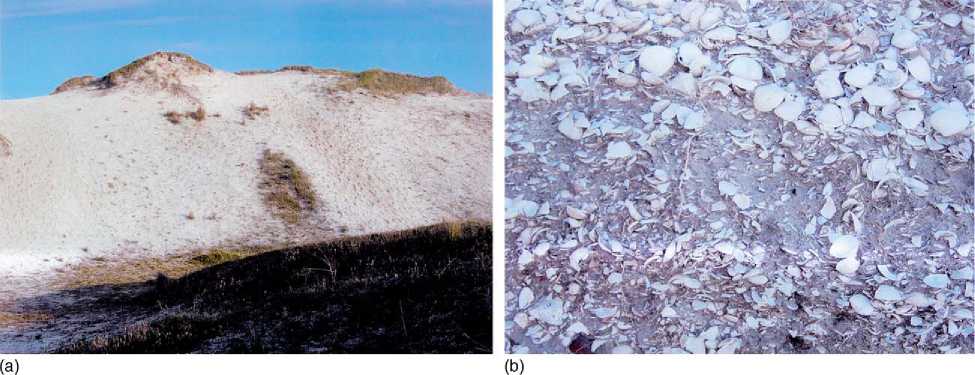Mollusks were first exploited as food in the Middle Palaeolithic/Middle Stone Age, but their ‘systematic’ use over long periods of time as a major dietary component seems to have begun in the transition from the Pleistocene to the Holocene. Shells that are food debris usually accumulated in large heaps referred to as shell middens (especially large heaps in Brazil are known as sambaqui; Figure 3). Shell middens, however, usually contain not only shell but also artifacts and other food refuse such as animal bones and botanical remains, and therefore should really be called shell-bearing sites. Because of their large size, shell middens or shell mounds are typically excavated by sampling. Often shell middens are characterized by species preference, that is, one or very few shell species are present in any site, either due to preference or availability. Those include bivalves (most common), gastropods (very often limpets), polyplacophorans (chitons), or sea urchins (see below). The decrease in shell size over time that is commonly observed in middens is often attributed to human overexploitation of the largest individuals in the population harvested. The repeated exploitation of the same species allows to carry out analyses of changes in stable isotopes, especially 918O, to determine long-term climate changes. Changes in oxygen isotope ratios reflect changes in temperature and serve to determine seasonal occupation of the shell midden, but also to infer on sea level changes. Seasonality can also be determined by making thin sections (especially of bivalves), and identifying seasonal (or daily) growth increments that reflect warmer or cooler seasons. Yet another method for determining seasonality of oyster middens would be by measuring parasitic gastropods (odostomes) that are associated with them. Occasionally shells from a midden had secondary use as raw material for ornaments, tools, and vessels (see above). During Roman Empire times oysters were cultivated.
Land snails were sometimes popular food items. Prehistoric populations in North Africa created ‘escargotieres’ (land snail middens), the Romans imported Helix snails to Britain, and snails endemic to Cyprus were imported to the Levant during Hellenistic times, in addition to using local species (see Shell Midden Analysis).
Shellfish are known to have been used as bait, and thus serve in another capacity as a food source, but this can hardly be detected archaeologically.





 World History
World History









